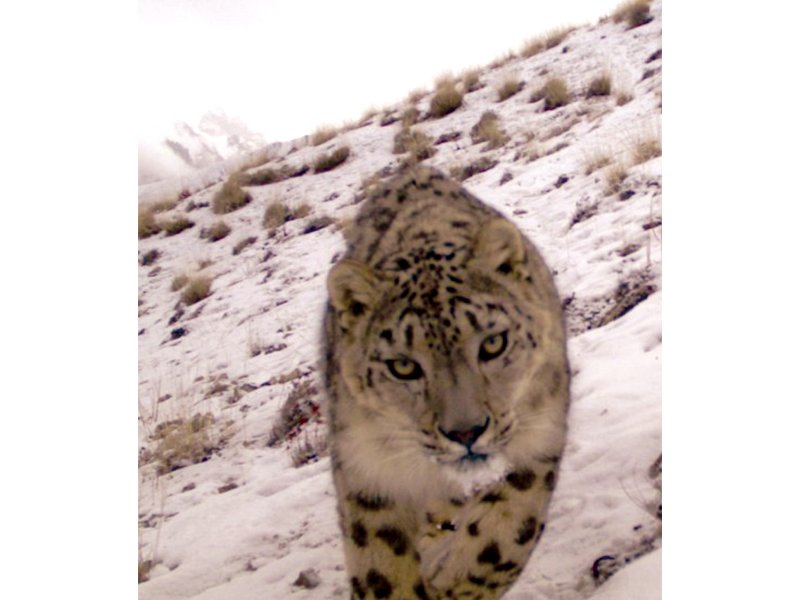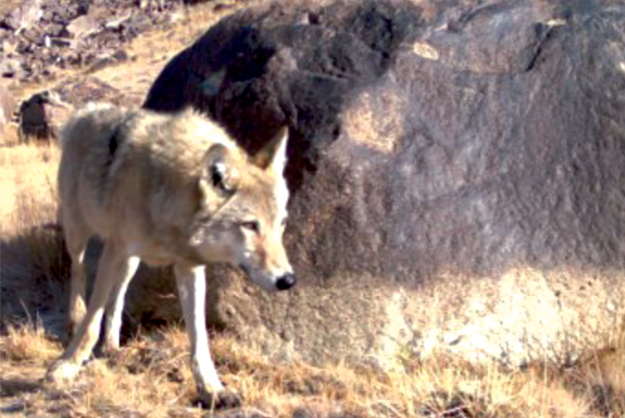
The spectacular mountain ranges in Gilgit-Baltistan (G-B) are home to several endangered species of carnivores that are rarely documented. However, a venture in G-B and Chitral is trying to boost conservation efforts in the country by collecting crucial information on the animals.
The Carnivore Guild Ecology Project (CGEP) has been undertaken by the Animal Sciences department at Quaid-e-Azam University (QAU), the Norwegian University of Life Sciences and the Snow Leopard Foundation Pakistan (SLFP), with funding from the Research Council of Norway. Using non-invasive methods such as “camera trapping” and genetic sampling in G-B’s national parks, the project is trying to ascertain the basic ecology of the carnivores, explained Dr Muhammad Ali Nawaz, a QAU professor involved with the project.

“There is little to no information on Pakistan’s wildlife,” said Nawaz. He emphasised that without substantial data, they cannot design conservation methods for the threatened species. CGEP researchers are trying to figure out the population, spatial distributions and genetic diversity of carnivore species. They are also observing how species interact with one another and with human communities.

In 2012, the team set up 116 “automatic wildlife cameras” around the Deosai National Park (DNP) in G-B. Nawaz said the cameras are equipped with an infrared motion sensor that captures photos during the day and nighttime as well. The cameras took 10,000 wildlife photographs of various species in the park.
Similarly, in 2011 the CGEP team used 121 camera traps in the Khunjerab National Park, also in G-B, to take 6,500 photos of wildlife over a period of 52 days with a focus on four species: snow leopard, red fox, Siberian ibex and Cape hare.
This information has provided CGEP researchers the data to evaluate habitat characteristics, and come up with population estimates, said Nawaz. Some of the photographs have also revealed information that challenges conventional understanding of animal life in Pakistan, revealed Nawaz.

The species being monitored through infrared cameras include the (clockwise) snow leopard, red fox, grey wolf and Siberian ibex. PHOTO: COURTESY
He said the Kashmir flying squirrel, earlier believed to be a forest species, was discovered in a forest-less area with bushes and rocks in G-B. The Pallas’s cat, previously undiscovered, was also found in Ghizer and wild cats, not believed to exist in the north, were seen in the Yarkhon valley, north of Chitral.

The project is currently in its third and last year, but Nawaz said there are some follow-up research projects that are in the pipeline. The cameras are in place at the Yarkhon Valley, he added.
SLFP member Jaffarud Din said this project was important because even though Pakistan has ratified conventions and treaties related to biodiversity and endangered animals, there was very little wildlife research and conservation work in the country. “Wildlife protection is not a priority and there is a lack of expertise in the area of animal conservation.”
To overcome a lack of expertise, capacity-building training of park rangers was conducted. Senior students of QAU also participated in the fieldwork of the project to gain experience.
Published in The Express Tribune, June 7th, 2013.
COMMENTS (5)
Comments are moderated and generally will be posted if they are on-topic and not abusive.
For more information, please see our Comments FAQ

















I love big cats and was a big fan of leopards and cheetahs but when I learnt about a decade ago about the Snow Leopard, that became my favorite big cat. Also as a Pakistani residing overseas, the Snow Leopard has become a source of pride for me in that Snow Leopard resides, among other places, in Pakistan.
@Hussain Baltistani: A very apt point. The people of Gilgit Baltistan fought against Dogra rule and were always clear on where they stood. THey should be given the the rights that they fought for. Environmental policy should also be a democraticv issue and the people who are affected should have the rights to influence policy and laws concerning the environment.
I think no one will ever disagree if entire Kashmir including GB could be declaired as a common Biodiversity zone with strick prohibition on poaching of these rare wild life . But the main problum lies with the administration of this habitat due to conflicting approach of India and Pakistan . Eco- Diplomacy and Eco - Politics can be helpful to ease the pvailing condition . With the help of Eco-awareness and conservation programme job opportunity can be created in these remote areas ,which in turn will reduce the problem of terrorism,if implemented sincerely .
Every Natural Beauty of Gilgit Baltistan is owned by Pakistan, Every Cultural and Historical heritage of GB is owned by Pakistan, Every natural and social potential of GB is owned by Pakistan, Every achievement got by GB's citizen is owned by Pakistan, But Pakistani Govenment refuses to give Basic Rights of voting, representation and legislation in Parliament and Senate of Pakistan. Why? Are only the People of GB not Pakistanis?
I am sure they are monitored by camera`s but no one is promoting them the way they should be they are the Pride of our Country. they must be Shared and Expressed in a way that the world would know what we have and how precious it is for us and the world.